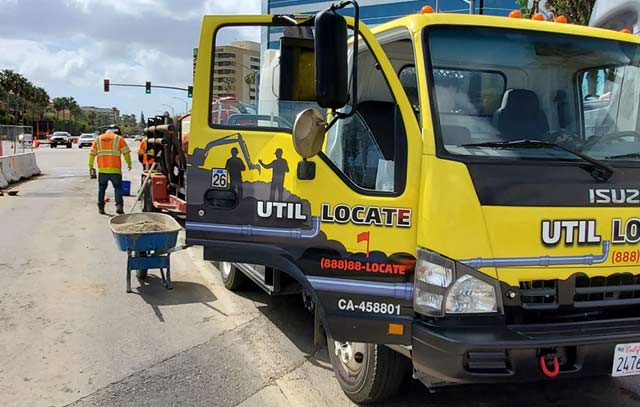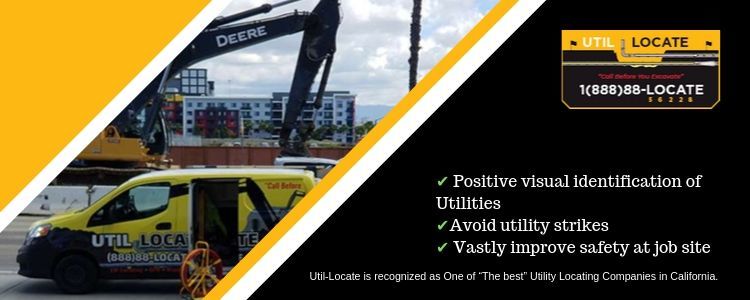When you are managing or working on a construction project, there are a lot of important factors to keep track of, such as budget, time constraints, and crew management. Modern construction sites have the advantage of using new equipment and methods that make work more efficient and less strenuous on your workers.
One common concern on many construction sites is the question of how to minimize surface damage when carrying out necessary work like utility excavation. Other methods of excavation involve imprecise equipment that has to tear through the ground to reach the utilities. This is why vacuum excavation is so important for any modern construction project.
Our expert team has years of experience with utility potholing and ensures that only the most minimal surface disruption occurs. This creates a more seamless process from potholing to post-excavation work. You will not have to worry about restoring the ground to its original state, which will save you both time and money—precious resources on any construction site!
Keep reading to find out the various ways you can limit the surface damage while excavating your construction site.
Plan Ahead
The way you prepare for excavating your construction site can be the difference between disaster and success. To make sure you collect all the necessary information about your construction site and the terrain, you should do the following:
- Check the maps: before you break ground on your construction site, you should consult approved utility maps, which Util-locate can provide to you alongside our other excavation services. These maps will show the location of subsurface objects such as pipes and cables as well as sewers, gas, and electrical lines, which you will need to avoid striking.
Referring to utility maps will get your project off on the right foot because you will be better informed and more aware of where to excavate for visual confirmation. Utility maps are a simple way to reduce the amount of earth that needs to be disturbed so there is less surface damage overall.
- Look at the surrounding area: the area around your construction site will inform you about how to proceed and will affect your budget. For instance, you will need to know where the nearest water supply and dumpsite is. A reliable water source is needed for the efficiency of hydro vacuum excavation and the proximity of a dumpsite will reduce the time spent driving unwanted soil away from your construction site.
- Consider using RADAR first: as with utility maps, RADAR technology is an important part of pre-excavation preparation. Ground Penetrating RADAR (GPR) is a non-intrusive surveying technique, which is used to locate utilities, rebar, conduits, voids, and other features below the surface.
Why is this useful? Because it records subsurface data, which can inform our specialists about how deep your excavation holes will need to be. GPR is completely non-destructive, which means it will not cause any surface damage.
GPR can be used on all types of surface because it can penetrate through soil, concrete, water, and many other types of terrain. It also detects more than just metallic objects like pipes, it can pick up on the location of other things like fiber-optic cables which are just as important to avoid during excavation.
- Choose a reliable excavation method: the most important thing to do to minimize surface damage is to choose the least invasive excavation method. Most construction sites now opt for hydro vacuum excavation when utility potholing because it is not only the most reliable method, but it is also the safest and most accurate.
Taken altogether, these features make vacuum excavation the best choice for anyone who wants less surface damage as well as efficient and precise utility locating.
- Hire a professional team: a team that is highly trained and experienced with vacuum excavation is the only way to make sure the excavation is carried out properly. A professional excavation team will create only the necessary surface disruption, which means you will spend far less time and money resurfacing the construction site after the excavation.
Choose the Least Invasive Methods
As briefly mentioned above, when it comes to utility potholing, the method you choose will affect how much the surface is damaged.
In the past, it was common to excavate by hand or with a backhoe, but both of these methods come with major downsides. Excavating with trowels and shovels is extremely time consuming and labor-intensive. While the initial cost may be cheap, its inefficiency and the number of workers needed to carry out the excavation means that the cost will add up exponentially over time. Backhoes are much more efficient, but the machines used for it are not accurate and utility strikes are much more likely to occur.
Remember: when you strike a utility line, the damage will always need to be repaired. This means even more excavation will be required, in addition to what are usually hefty fines and long delays.
To avoid these issues and unwanted costs, it is always recommended to use hydro vacuum excavation. Not only will you receive visual verification of utility line locations, but it can also be done quickly and safely. When the work is complete, only the small excavation holes will need to be covered over.
Stay Safe
Overall, the safety of your crew is the most important thing. Safety measures and training should always be implemented to ensure that everyone on the construction site can stay safe and injury-free.
Utility strikes can result in the loss of water or energy resources within the local community, which is especially dangerous for buildings such as hospitals. This is why it is so important to choose a method that will keep everyone, including members of the public safe.
When carried out by a professional team, vacuum excavation is proven to be time and cost-efficient, as well as incredibly safe. What is an added bonus is its ability to lessen the surface damage incurred by the excavation process.


